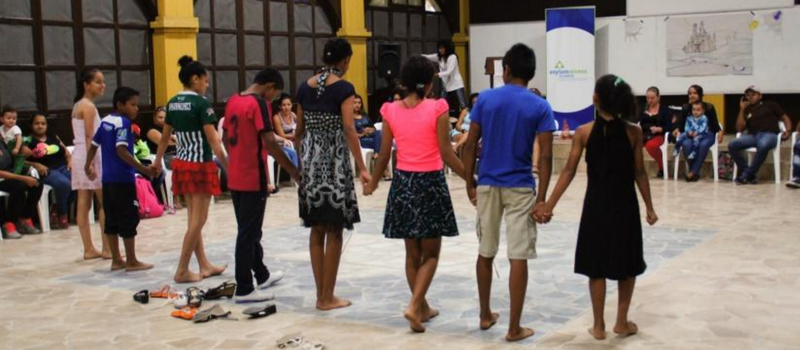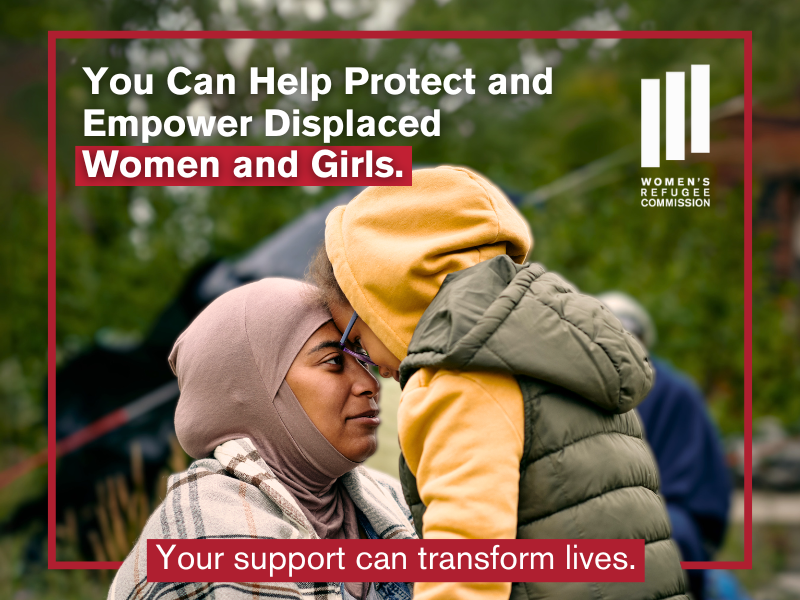Displacement is increasing dramatically and it is increasingly urban. Today 65.6 million people around the world are displaced by conflict and 60% of those who are refugees have found refuge in urban areas. This necessitates a re-think of humanitarian service delivery including for the prevention of and response to gender-based violence (GBV). Specifically, it is imperative that we all dig deep to better understand, prevent, and respond to GBV in urban settings.
In urban areas, the risks are different from those found in more traditional refugee camp settings and the perpetrators in cities are numerous. They often are landlords, neighbors, and/or employers – people that refugees must come into contact with to survive. Simultaneously, cities often make access to protection networks more difficult. Further, the risks are compounded by a myriad of social markers such as race, ethnicity, language, gender identity, sexual orientation, and disability.
Ever aware of the transformative nature of urban migration, UN agencies, non-governmental organizations, and donor and host governments recognize the necessity for a paradigmatic shift in how we think about, fund, and operationalize core mandates in urban settings – including protection and GBV prevention and response.
Yet, evidence-based research – and subsequent data – to advance new best practices in an urban context is limited. The Women’s Refugee Commission (WRC) report Mean Streets identifies the need for new strategies to leverage opportunities that exist in cities, such as partnerships with local actors and host community organizations. Given the diversity across refugee populations, better-tailored approaches to addressing refugee needs and capabilities in urban settings is critical, especially when it comes to GBV prevention and response.
Throughout 2016, WRC partnered with organizations in four cities to do just that – pilot innovative interventions to reduce the GBV risks and strengthen resilience for different urban refugee populations.
In Kampala, Uganda, WRC partnered with Reproductive Health Uganda (RHU) to pilot activities that brought mobile health clinics to hard-to-reach refugee neighborhoods and that engaged refugee women who self-identify as selling sex to become peer educators. Both activities were designed to create safe and culturally-relevant spaces to address GBV with one project focusing on location, and the other, population. The sex worker peer education program, which provided knowledge and skills training around human rights, family planning, parenting, workplace safety, engaging with law enforcement, and HIV/STI testing, marked the first time that RHU had tailored its sex worker peer education program specifically for refugees. In addition, the work with refugee women engaged in sex work helped to advance a rights-based approach within refugee response, which is imperative if we are to close the large service and information gaps that expose refugees engaged in sex work to health and safety risks.
In Delhi, India, WRC partnered with the Don Bosco Association to launch eleven Urban GBV Task Forces in refugee communities throughout Delhi. The Task Forces – which consist of local refugees – engaged in a variety of activities, which included convening “rapport building sessions” with local police precincts
In Beirut, Lebanon, WRC partnered with two local organizations to strengthen the protective peer networks of two traditionally marginalized urban refugee populations: transgender women refugees and refugees with disabilities. MOSAIC, a Lebanese human rights organization, brought together Lebanese and refugee transwomen (from Syria, Palestine, and Iraq) to engage in art and drama therapy, as well as skills-building sessions for activism and risk reduction. It is likely the first such project of its kind, developed for and with transwomen from both refugee communities and the host community. WRC’s second partner in Beirut was LASA, the Lebanese Association for Self-Advocates, an organization run by and for Lebanese persons with intellectual disabilities. Members of LASA conducted outreach to refugees with disabilities and engaged them in activities centered on building their skills and capacities to identify, discuss, and respond to incidents of GBV while fostering peer relationships and information sharing. In Santo Domingo, Ecuador, WRC partnered with Asylum Access Ecuador (AAE) to strengthen safe identification and referral pathways for adolescent refugee girls in schools. This involved coordinating with local school administrators, parents, and municipal officials. Dance therapy activities – which created a safe space for girls to express their feelings and address their vulnerabilities – involving both refugee and host community adolescents were another component of the project. Not all of the case studies can or should be replicated wholesale in every urban context. But components of each have universal relevance across cities, components which can be adapted and/or refined to address the particular needs of urban refugees, including marginalized and at-risk groups. A key takeaway – and that which should be replicated wherever possible – is engaging local partners already serving marginalized host community groups and extending their reach to displaced populations. As we saw with these case studies, this can take many forms – critical, however, is the need to work with and through local actors and organizations to strengthen the humanitarian response. To read more about these pilot interventions, click: http://wrc.ms/urban-gbv-case-studies



